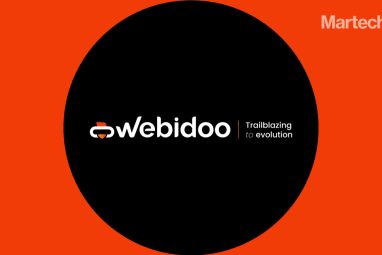Simple and Effective Way to Measure ROI On Content Marketing
You will end up spending a handsome amount on content marketing since it is so effective. Just how effective your content marketing is and what returns you get on your investment should be measurable This brief guide should be able to help you to measure your ROI on content marketing. Content marketing Content is king […]
Topics
You will end up spending a handsome amount on content marketing since it is so effective. Just how effective your content marketing is and what returns you get on your investment should be measurable
This brief guide should be able to help you to measure your ROI on content marketing.
-
Content marketing
Content is king so said Google and others. Not surprising then that content marketing is the cornerstone of digital marketing strategies. The broad term content marketing covers strategies to achieve business goals through content that attracts, engages and motivates.
Content marketing is important in that it adopts a customer’s perspective and optimizes business value. The important thing here in this post is to know the returns on investment in your content marketing strategy.
Also read: How to Build a Growth Marketing Team to Scale, Emre Tok Growth Marketing Champions EP 01
-
The simple way of measuring ROI on content marketing
Measuring ROI can be complex due to the involvement of so many variables. It is important since content marketing touches 300 billion dollars and it can generate thrice, the number of leads while costing 62% less.
Plus, you consider the goal: whether it is purely in money terms of an increase in brand value, which is an intangible as is an increase in traffic. With so many variables to consider the calculation would be complex d results confusing. Only 38% of marketers consider they can measure ROI with some degree of precision. Still, you can go by a simple method to calculate ROI on content marketing.
Use Google’s analytics tool and keyword planner tool to arrive at the cost per click for a selected keyword.

Multiply CPC by the organic entrance and extrapolate data using Excel.
However, while this may give you a rough estimate, it may not show the whole or the correct picture.
· Looking at performance indicators
Content marketing influences buy decisions, gets you more cross-sell and upsell, and boosts revenues, among other benefits. Content marketers look at several key performance indicators in each segment to arrive at an educated guess about the returns.
For example, if you consider marketing, then the performance indicators are cost per acquisition, market share, brand equity, cost per lead, conversion rate, click-through rate, bounce rate, and page views among others.
However, content marketing may be spread across email campaigns, SEO, website promotion, and social media in which case each category’s performance metrics must be considered. You will find it best to select only a few metrics to measure the ROI to get clarity.
These metrics should also be references to the business objectives. To cut a long story short, you can focus on content consumption metrics, sharing metrics, lead generation metrics, and sales metrics.
Then there is the time factor. You could start a campaign today and measure in about two months or two years and the results would be different. You could start a fresh campaign that would see a jump in results which could indicate better ROIs, whereas, for an ongoing campaign, the gains would be slightly incremental, leading you to assume lower ROIs.
Marketers may look at metrics and performance as indicators of ROIs, but business managers and clients look at returns on investments in content marketing.
· Calculating ROI
The first step is to calculate just how much direct and indirect money is invested in content marketing. These could cover:
1. In-house and outsourced services
2. Website and blog costs
3. Content writing costs
4. Workflow costs and costs of personnel
5. Overheads and operational expenses
The next step is to calculate the ROI. You could do it every month or for a certain period. If your assumed income (attributed to content marketing) is 10000 dollars per month, giving you a yield of 10% profit, then the return is $ 1000.
Deduct from your earning per month the amount of investment spent on content marketing per month, which could be, say, $ 700. So, your ROI is $ 300. This, again, is a simplistic way to calculate ROI on content marketing, because, for instance, taxes have not been factored in.
A simple formula is a Revenue minus investment divided by investment with the result shown as a percentage.
The best way to get somewhat accurate figures of ROI is to calculate it for each channel of content marketing. However, care must be taken in choosing the right performance metrics and goals and using the above formula.
You could consolidate revenues and investments for all channels and use the total to calculate ROIs, which is one way of doing it.
If you are interested in delving into details, you can know more about how marketers calculate ROIs. If you are a client and want to know the expected ROI on content marketing, then the above thumb rule is a rough indicator.
As is the case when many variables are involved in an equation, the results can differ depending on which variables you choose and the goal of your content marketing campaign.
On the other hand, you could simply leave it to your digital marketing expert to give you figures on ROIs on content marketing.
Also read: UAEs Way2Smile Solutions Ranked Among the Best AR and VR Companies of 2020
About the author:
Rakshit is a content marketer at PeddleWeb, an internet advertising company in India. He holds spectacular skills in digital marketing, branding, lead generation, customer retention and a few more.






